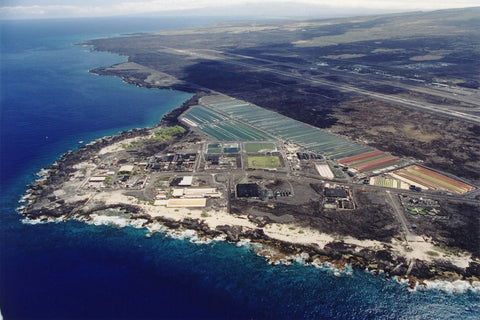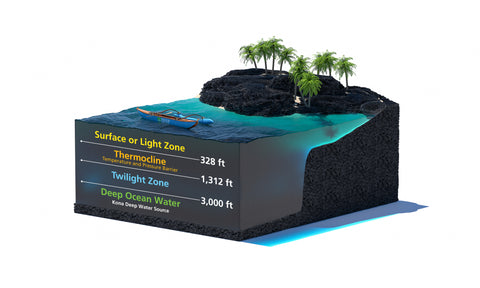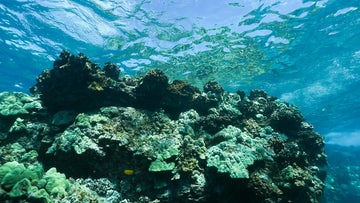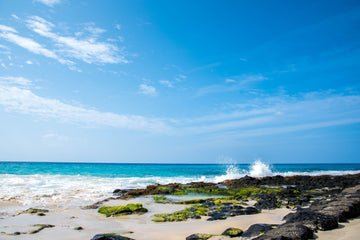Source

When finding out that Kona Deep is able to successfully source water that is safe for drinking from our vast oceans, the next question is always “Why isn’t everyone doing this”?
There are many desalination plants around the world, however the vast majority are not able to desalinate in safe and economically efficient way for human consumption. That is because typical desalination plants are utilizing surface ocean water which is dirty and needs to be purified. This is an energy intensive and expensive process. Since deep ocean water is naturally very pure, it requires less energy to desalinate as we do not need to purify.
The ability to source this deep ocean water is unique to Hawaii’s geography, but it is also unique because of The State of Hawaii’s enthusiasm and dedication to the environment, its oceans and diversifying the Hawaiian economy.

The Pipe
Our source water comes from an incredible, mile long pipe built by the National Energy Laboratory of Hawaiian Authority. We pull water from this special, deep ocean current from 3,000 feet below the ocean surface off Kona Hawaii. The pipe was originally built to create alternative energy and subsequently utilized to feed a large number of uses from aquaculture to Kona Deep, Deep Ocean Water.
NELHA’s mission is to develop and diversify the Hawaii economy by providing resources and facilities for energy and ocean-related research, education, and commercial activities in an
environmentally sound and culturally sensitive manner.
The State of Hawaii has invested over $100 million since 1974 to create this HOST Park, a unique outdoor demonstration site for emerging renewable and ocean based technologies. Three sets of pipelines deliver deep sea water from up to 3000 ft depth. The innovative green economic development park is administered by NELHA, a State of Hawaii agency administratively attached to DBEDT. After three decades, NELHA is well on track to fulfilling its mission as an engine for economic development.

Deep Ocean Water vs. Surface Ocean Water
Where do deep ocean currents come from and why does it not mix with surface ocean water?
Deep ocean currents (also known as Thermohaline Circulation) are caused by:
The density of seawater varies globally due to differences in temperature and salinity. Surface water is heated by the sun, and warm water is less dense than cold water. Similarly, fresh water is less dense than salty water. At northern latitudes, surface water is cooled by extremely cold air. This cool water can becomes denser than the underlying water causing it to sink. The sinking and transport of large masses of cool water gives rise to the thermohaline circulation, which is driven by density gradients due to variations in temperature and salinity.
The earth’s rotation also influences deep ocean currents
In general, wind-driven currents dominate the upper ocean, and thermohaline circulation drives the movement of the deep ocean.

As a result, deep ocean currents and surface ocean currents do not mix. The purity of deep ocean water remains untouched by light and civilization and can only be accessed after passing the thermocline layer (a thin but distinct layer in a large body of water in which temperature changes more rapidly with depth than it does in the layers above or below).


